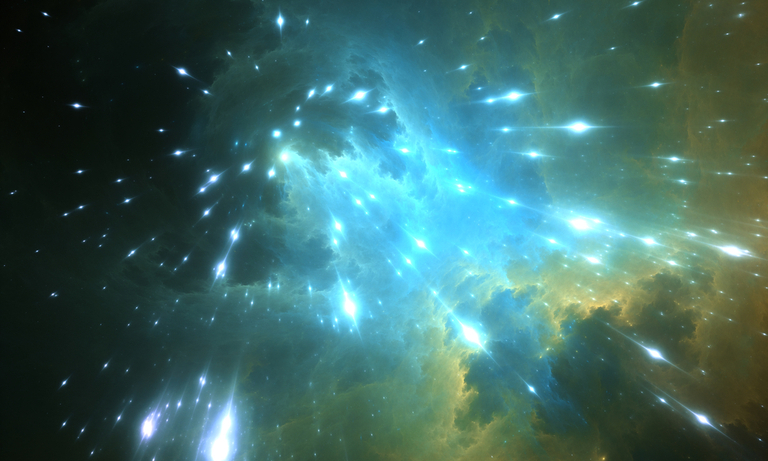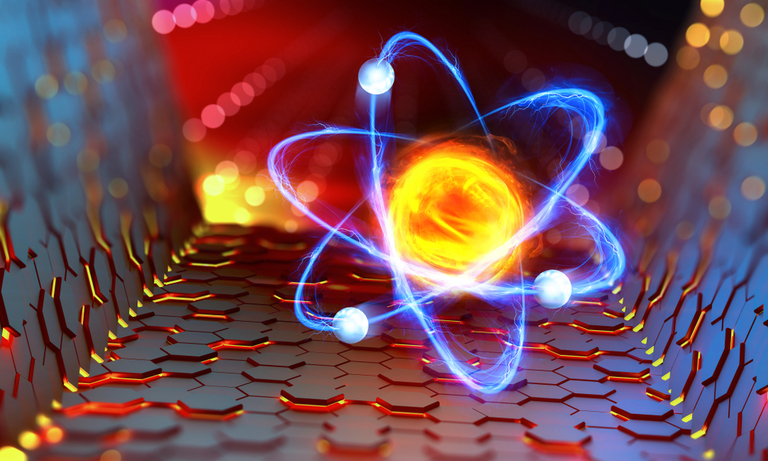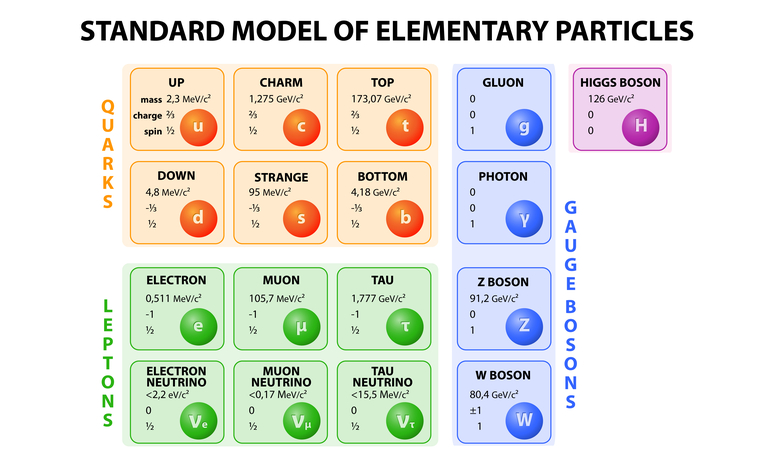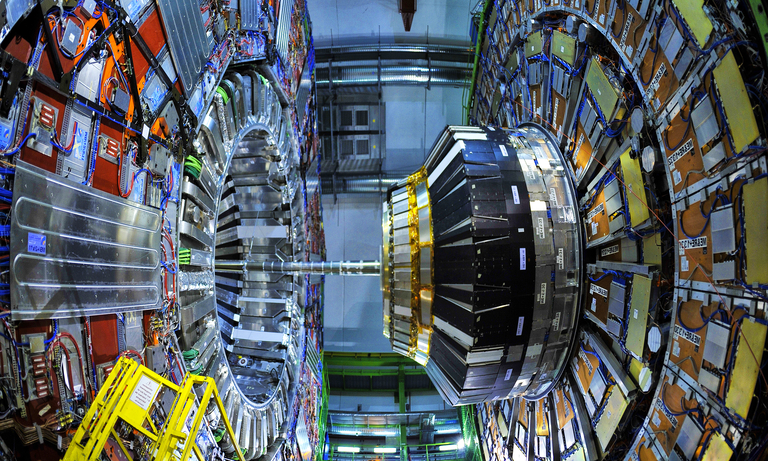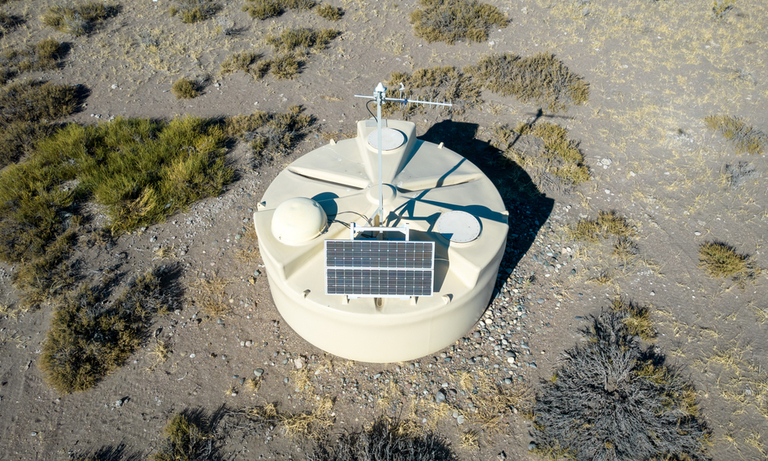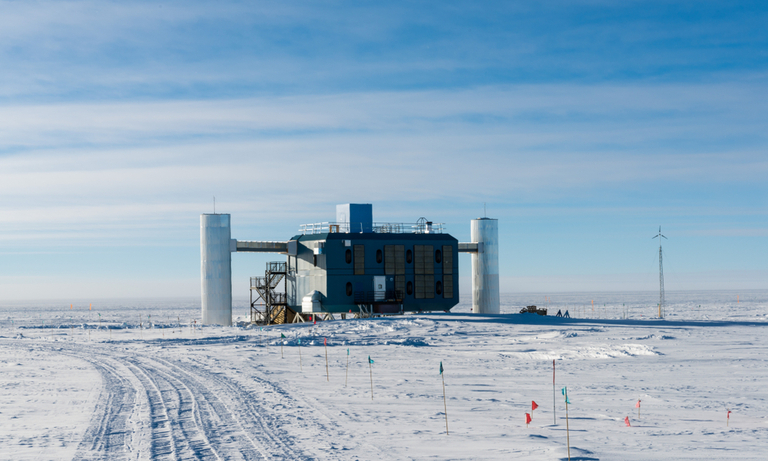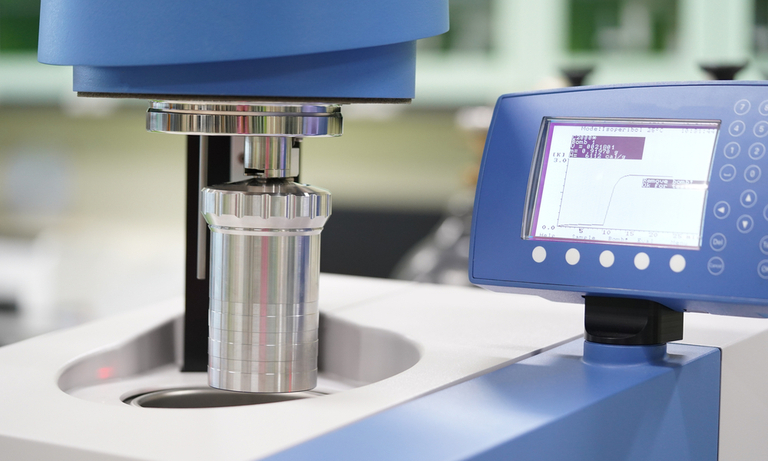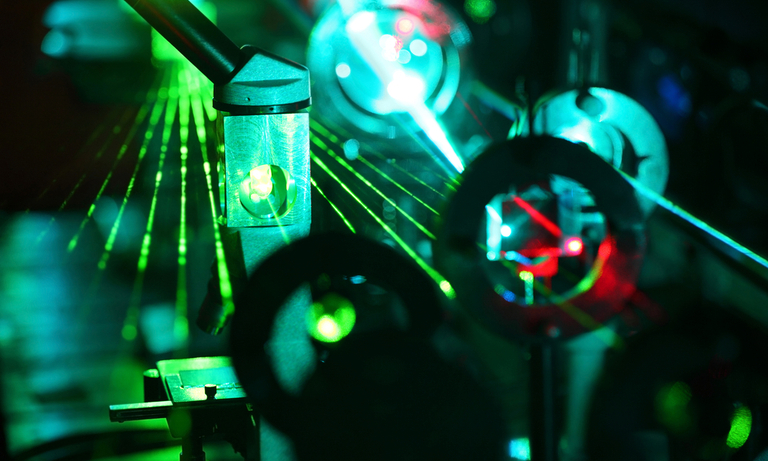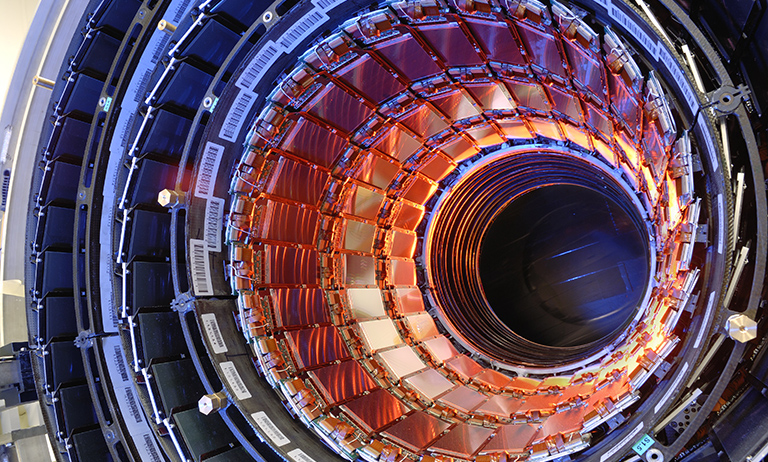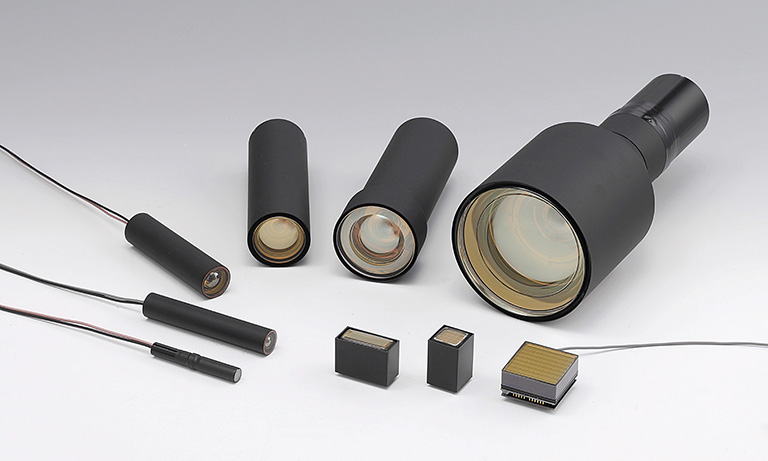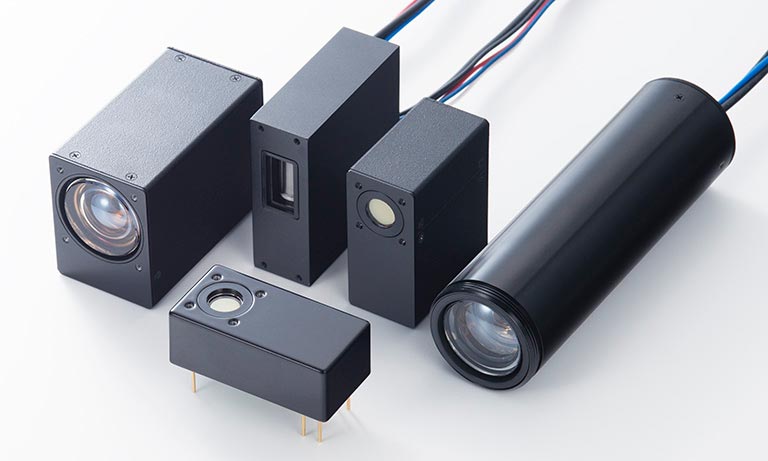Home
Products
Physics Research Field
Type of Experiment
Detector Type
Behind the Science
Tech in a Nutshell
United Kingdom (EN)
Select your region or country.

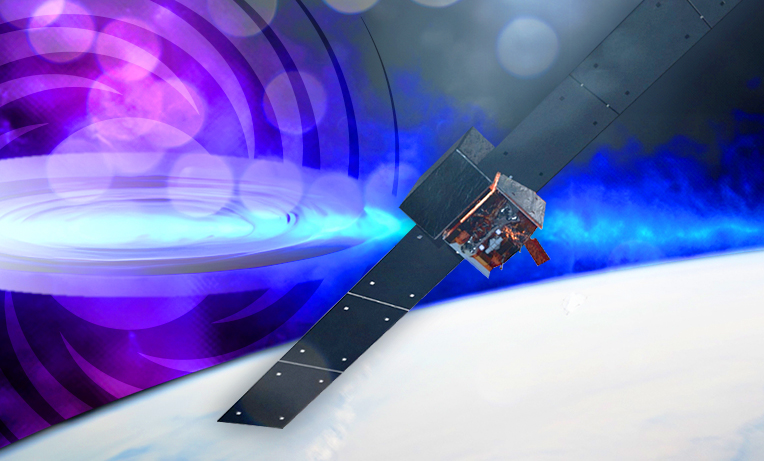
Fermi: Orbiting Earth in search of answers
An unknown view of the sky
We are all familiar with looking at the sky by night, but only some of us know that the visible spectrum is just a tiny part of the electromagnetic spectrum in which our sky shines. Many effects remain hidden from our human eye, although they are much brighter than what we can observe. Gamma-ray bursts (GRB) are such effects. In just a few seconds, a single GRB can release the same amount of energy that our sun radiates over its 10-billion-year lifespan*1. Still, we cannot see them as their wavelength is too short, and the light is absorbed in the upper layers of the Earth’s atmosphere.
As GRBs unveil the violent side of the universe, where stars collide or burst near black holes, the scientific community’s keen interest in these events led to the creation of a dedicated instrument for such high-energy electromagnetic radiation: The Fermi Gamma-ray Space Telescope (FGST)
Launched into space in 2008, the FGST orbits around the Earth every 90 minutes. Its two main sensors on board, the Gamma-ray Burst Monitor (GBM) and the Large Area Telescope (LAT) scan the sky for intriguing events, picking up X-rays and gamma rays within a wide energy range*1. The GBM captures radiation with energies from 8 keV to 30 MeV, while the LAT extends the range to gamma rays ranging from 20 MeV to 300 GeV*1. Since existing instruments in space were limited to detecting light with energies up to 30 GeV, the new sensor marks a significant advancement in the detectable energy spectrum and helps to learn more about GRBs. However, developing and building such a sensor for a spacecraft proved to be a significant challenge.
*This beauty shot begins with the earth in full view, then spans to reveal the spacecraft and the gamma ray sky it will observe. Courtesy of NASA/Goddard Space Flight Center Conceptual Image Lab. Watch the video
Detecting high-energy gamma rays in space
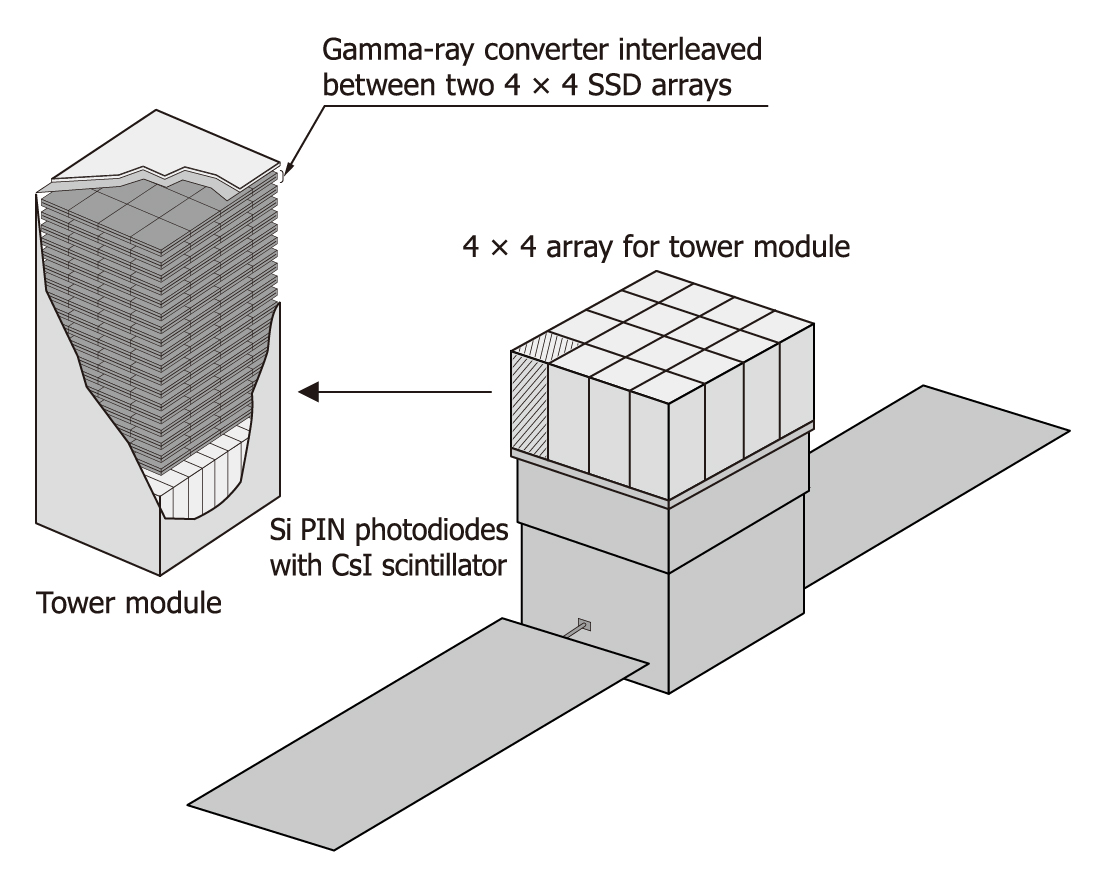
© Tower module used in the FGST detector
The Fermi’s LAT is a modular instrument designed to detect gamma rays using pair production: When a gamma ray collides with a metal layer, it can convert them into an electron-positron pair. The incoming gamma ray’s direction is determined by tracing the path of these subatomic particles back to their source, facilitated by several layers of high-precision silicon tracking detectors. Subsequently, a calorimeter absorbs and measures the energy of the particles, allowing the cumulative energy to be calculated, revealing the energy of the initial gamma ray*1.
The Fermi’s LAT comprises 4 x 4 identical detection towers, each equipped with a tracker, a calorimeter, and a customized readout electronics module. These trackers consist of 36 silicon sensor layers, each containing arrays of 4 x 4 silicon strip sensors, combined with 18 tungsten layers.
In total, the Fermi LAT boasts an impressive 83m² of silicon sensor surface and almost 1 million individual channels, which makes it the largest silicon-strip detector ever built for space applications.
Crucial importance of sensor quality for space applications
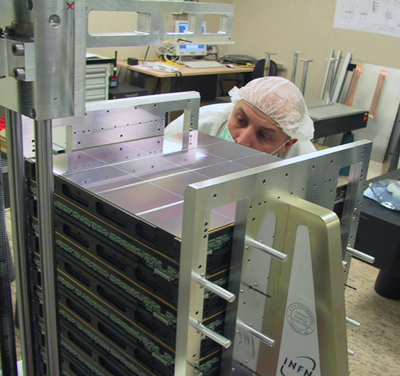
© Fermi’s LAT Tower assembly and alignment
However, developing a large-scale sensor for space applications resulted in challenging requirements, especially on the Si strip sensors tracking the subatomic particles*2. Due to the large detection area of the instrument, the Fermi scientists were prompted to seek a larger sensor design which could significantly reduce the number of required sensors. Additionally, the power consumption of the strip sensor had to be minimal since, in space, all energy must be harnessed by the spacecraft through solar panels. The lower the power consumption of each of the 10,000 strip sensors, the better*2. Finding a manufacturer capable of rapid and reliable production meeting the highest quality standards became paramount*2. After all, the team only had 5 years to build the complete sensor!
In response to these demanding requirements, the team approached Hamamatsu Photonics in 2001. At this time, Hamamatsu was already producing Si strip sensors on 4” wafers. However, the larger sensor required a new production line for 6” wafers*2, which presented a significant investment challenge. Additionally, the initial power consumption of the sensors was not suitable for this type of space application, necessitating a redesign. Yet, Hamamatsu rose to the occasion, and the results were extraordinary. The optimized sensor including its electronics consumes only a few micro-watts per channel*2. Remarkably, the LAT, weighing 3 tons with almost a million channels of electronics, uses less than half the power of an ordinary hair dryer*1. The production line operated seamlessly, with Hamamatsu producing, testing, and delivering 12,500 newly designed 6” Si strip sensors, over the following 3 years, achieving an impressive rejection rate of 0.6%*2.
This exceptionally high production quality proved to be crucial for the project timeline. Instead of measuring each strip individually (approximately 1 million measurements), the scientists could now transition to a more streamlined global testing approach at the sensor level with approximately 10,000 measurements. This led to a significantly faster testing and production phase for the LAT sensor, culminating in an on-time launch into space in 2008.
The robustness and high quality of the sensors also became evident on Fermi’s 15th anniversary. Spare part sensors, left untouched on shelves for over 15 years, were employed by scientists to construct a small particle tracker. Impressively, these sensors performed flawlessly, attesting to their enduring quality.
Insights and new questions about our universe
So far Fermi's LAT sensor has enabled a multitude of discoveries, reshaping our understanding of the universe. It has unveiled new pulsars, provided insights into massive gamma-ray bursts, and probed the nature of mysterious dark matter. One of the most significant findings was the discovery of numerous new gamma-ray sources, many of which were previously unknown. These discoveries have not only expanded our cosmic map but have also challenged existing theories and models of cosmic phenomena*3.
While originally designed for a minimum operation time of 5 years extendible to 10 years, the Fermi Gamma-ray Space Telescope remains operational even after more than 15 years, with an enduring relevance for the scientific community. Particularly, the burgeoning field of multi-messenger astronomy benefits from Fermi’s observations*3,4. This new approach is based on the coordinated observation of signals from different sources or “messengers”, including gravitational waves, neutrinos, cosmic rays, or electromagnetic radiation. As each of them is created by different astrophysical processes, they reveal different information about their sources and together provide new insights into the universe*3,4.
In this way, as the Fermi Gamma-ray Space Telescope persists in its mission, it holds the promise of unearthing further discoveries from the mostly unseen high-energy sky. The convergence of insights from different messengers enhances our ability to decipher the intricacies of the cosmos, fueling anticipation for new revelations in the ever-evolving narrative of our universe.
“Looking back, it was more than what we could expect when dealing with the technical success in the quality of this device. In terms of robustness, low power, and capacity in the production, it was great, especially because we needed at the end 2,000 sensors per year, so it was a really high-speed production.” Ronaldo Bellazzini, former Italian Principal Investigator and Professor at Istituto Nazionale di Fisica Nucleare.
References
*1. GLAST SCIENCE WRITER’S GUIDE “Exploring the Extreme Universe”
*2. Presentation of Ronaldo Bellazzini at the Fermi-LAT Collaboration Meeting in 2018
*3. Fermi: Monitoring the Gamma-Ray Universe, David J. Thompson, Galaxies 2018, 6(4), 117
*4. The Fermi Sky in a Multimessenger Context, F. Krauss on behalf of the Fermi-LAT Collaboration, Proceedings of Science of the Neutrino Oscillation Workshop NOW2016 (2016)
Related products & information
- Confirmation
-
It looks like you're in the . If this is not your location, please select the correct region or country below.
You're headed to Hamamatsu Photonics website for GB (English). If you want to view an other country's site, the optimized information will be provided by selecting options below.
In order to use this website comfortably, we use cookies. For cookie details please see our cookie policy.
- Cookie Policy
-
This website or its third-party tools use cookies, which are necessary to its functioning and required to achieve the purposes illustrated in this cookie policy. By closing the cookie warning banner, scrolling the page, clicking a link or continuing to browse otherwise, you agree to the use of cookies.
Hamamatsu uses cookies in order to enhance your experience on our website and ensure that our website functions.
You can visit this page at any time to learn more about cookies, get the most up to date information on how we use cookies and manage your cookie settings. We will not use cookies for any purpose other than the ones stated, but please note that we reserve the right to update our cookies.
1. What are cookies?
For modern websites to work according to visitor’s expectations, they need to collect certain basic information about visitors. To do this, a site will create small text files which are placed on visitor’s devices (computer or mobile) - these files are known as cookies when you access a website. Cookies are used in order to make websites function and work efficiently. Cookies are uniquely assigned to each visitor and can only be read by a web server in the domain that issued the cookie to the visitor. Cookies cannot be used to run programs or deliver viruses to a visitor’s device.
Cookies do various jobs which make the visitor’s experience of the internet much smoother and more interactive. For instance, cookies are used to remember the visitor’s preferences on sites they visit often, to remember language preference and to help navigate between pages more efficiently. Much, though not all, of the data collected is anonymous, though some of it is designed to detect browsing patterns and approximate geographical location to improve the visitor experience.
Certain type of cookies may require the data subject’s consent before storing them on the computer.
2. What are the different types of cookies?
This website uses two types of cookies:
- First party cookies. For our website, the first party cookies are controlled and maintained by Hamamatsu. No other parties have access to these cookies.
- Third party cookies. These cookies are implemented by organizations outside Hamamatsu. We do not have access to the data in these cookies, but we use these cookies to improve the overall website experience.
3. How do we use cookies?
This website uses cookies for following purposes:
- Certain cookies are necessary for our website to function. These are strictly necessary cookies and are required to enable website access, support navigation or provide relevant content. These cookies direct you to the correct region or country, and support security and ecommerce. Strictly necessary cookies also enforce your privacy preferences. Without these strictly necessary cookies, much of our website will not function.
- Analytics cookies are used to track website usage. This data enables us to improve our website usability, performance and website administration. In our analytics cookies, we do not store any personal identifying information.
- Functionality cookies. These are used to recognize you when you return to our website. This enables us to personalize our content for you, greet you by name and remember your preferences (for example, your choice of language or region).
- These cookies record your visit to our website, the pages you have visited and the links you have followed. We will use this information to make our website and the advertising displayed on it more relevant to your interests. We may also share this information with third parties for this purpose.
Cookies help us help you. Through the use of cookies, we learn what is important to our visitors and we develop and enhance website content and functionality to support your experience. Much of our website can be accessed if cookies are disabled, however certain website functions may not work. And, we believe your current and future visits will be enhanced if cookies are enabled.
4. Which cookies do we use?
There are two ways to manage cookie preferences.
- You can set your cookie preferences on your device or in your browser.
- You can set your cookie preferences at the website level.
If you don’t want to receive cookies, you can modify your browser so that it notifies you when cookies are sent to it or you can refuse cookies altogether. You can also delete cookies that have already been set.
If you wish to restrict or block web browser cookies which are set on your device then you can do this through your browser settings; the Help function within your browser should tell you how. Alternatively, you may wish to visit www.aboutcookies.org, which contains comprehensive information on how to do this on a wide variety of desktop browsers.
5. What are Internet tags and how do we use them with cookies?
Occasionally, we may use internet tags (also known as action tags, single-pixel GIFs, clear GIFs, invisible GIFs and 1-by-1 GIFs) at this site and may deploy these tags/cookies through a third-party advertising partner or a web analytical service partner which may be located and store the respective information (including your IP-address) in a foreign country. These tags/cookies are placed on both online advertisements that bring users to this site and on different pages of this site. We use this technology to measure the visitors' responses to our sites and the effectiveness of our advertising campaigns (including how many times a page is opened and which information is consulted) as well as to evaluate your use of this website. The third-party partner or the web analytical service partner may be able to collect data about visitors to our and other sites because of these internet tags/cookies, may compose reports regarding the website’s activity for us and may provide further services which are related to the use of the website and the internet. They may provide such information to other parties if there is a legal requirement that they do so, or if they hire the other parties to process information on their behalf.
If you would like more information about web tags and cookies associated with on-line advertising or to opt-out of third-party collection of this information, please visit the Network Advertising Initiative website http://www.networkadvertising.org.
6. Analytics and Advertisement Cookies
We use third-party cookies (such as Google Analytics) to track visitors on our website, to get reports about how visitors use the website and to inform, optimize and serve ads based on someone's past visits to our website.
You may opt-out of Google Analytics cookies by the websites provided by Google:
https://tools.google.com/dlpage/gaoptout?hl=en
As provided in this Privacy Policy (Article 5), you can learn more about opt-out cookies by the website provided by Network Advertising Initiative:
http://www.networkadvertising.org
We inform you that in such case you will not be able to wholly use all functions of our website.
Close


